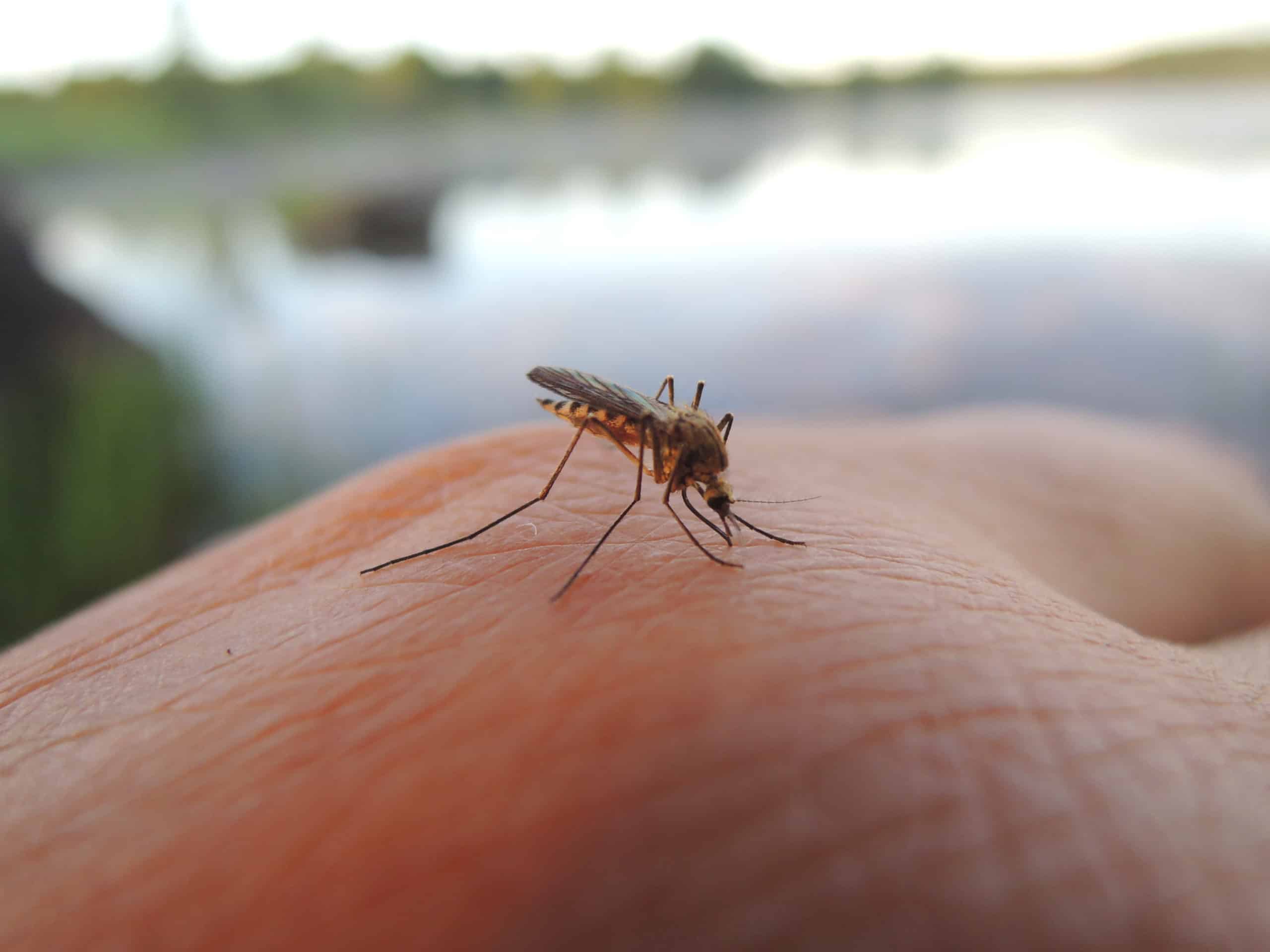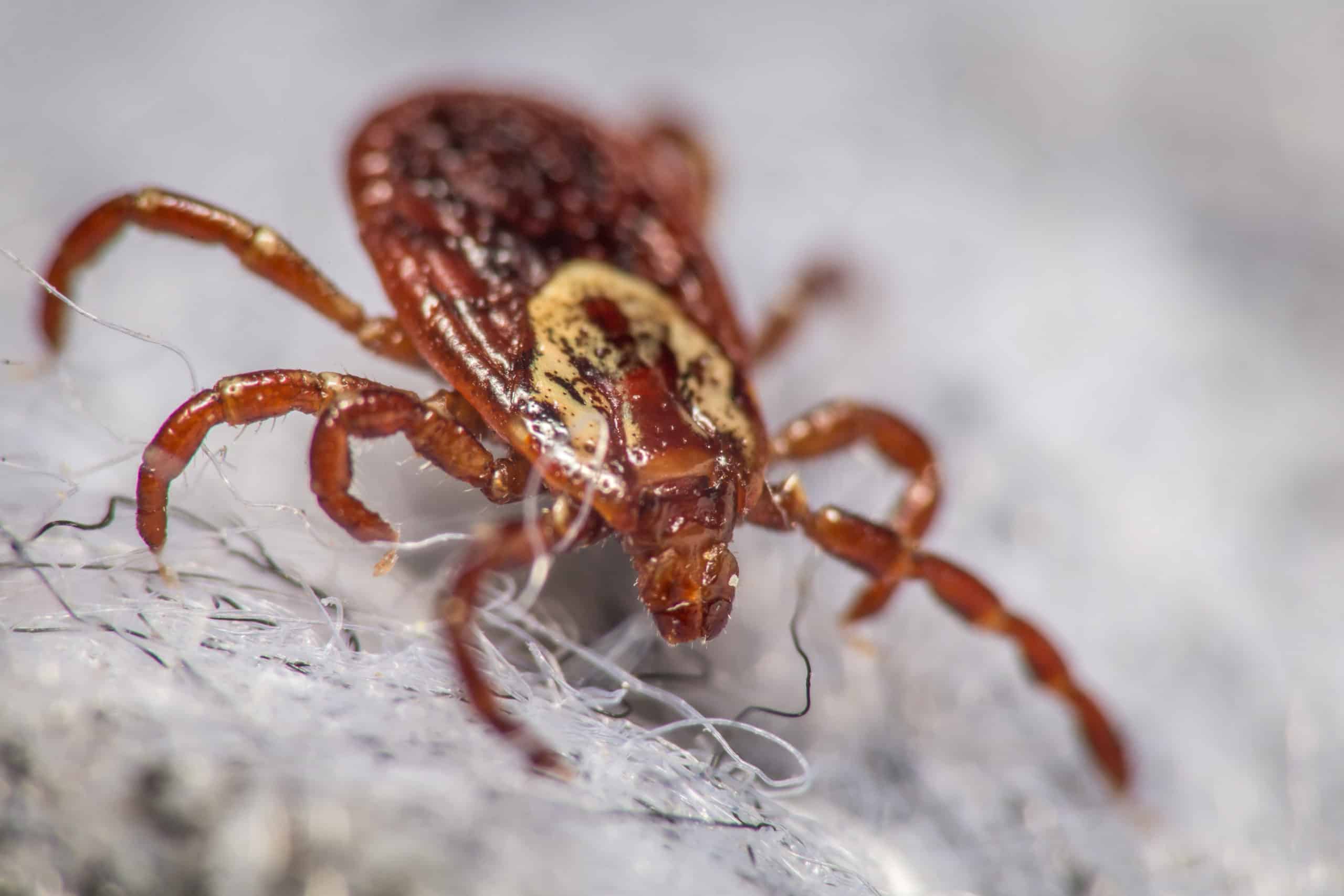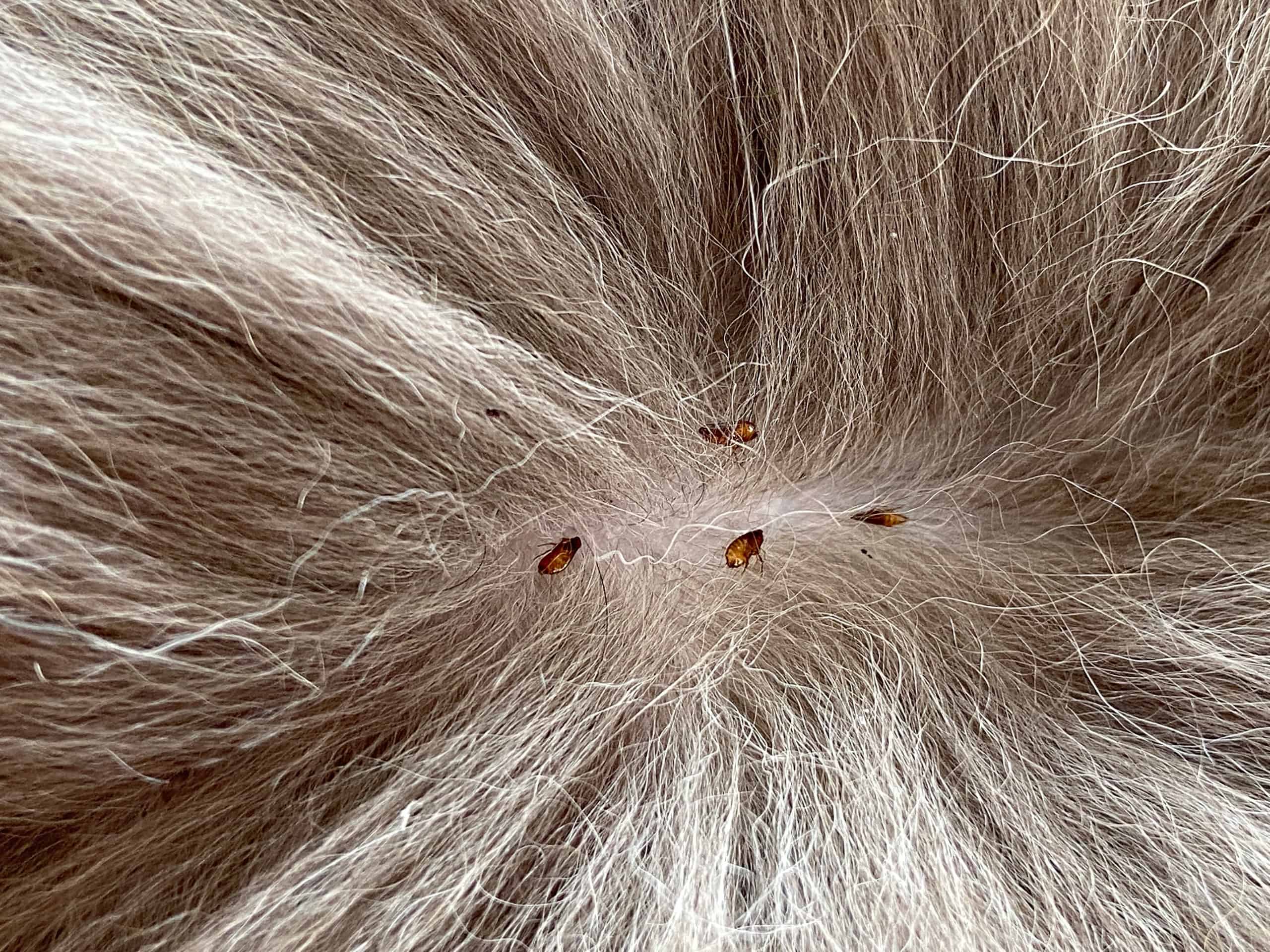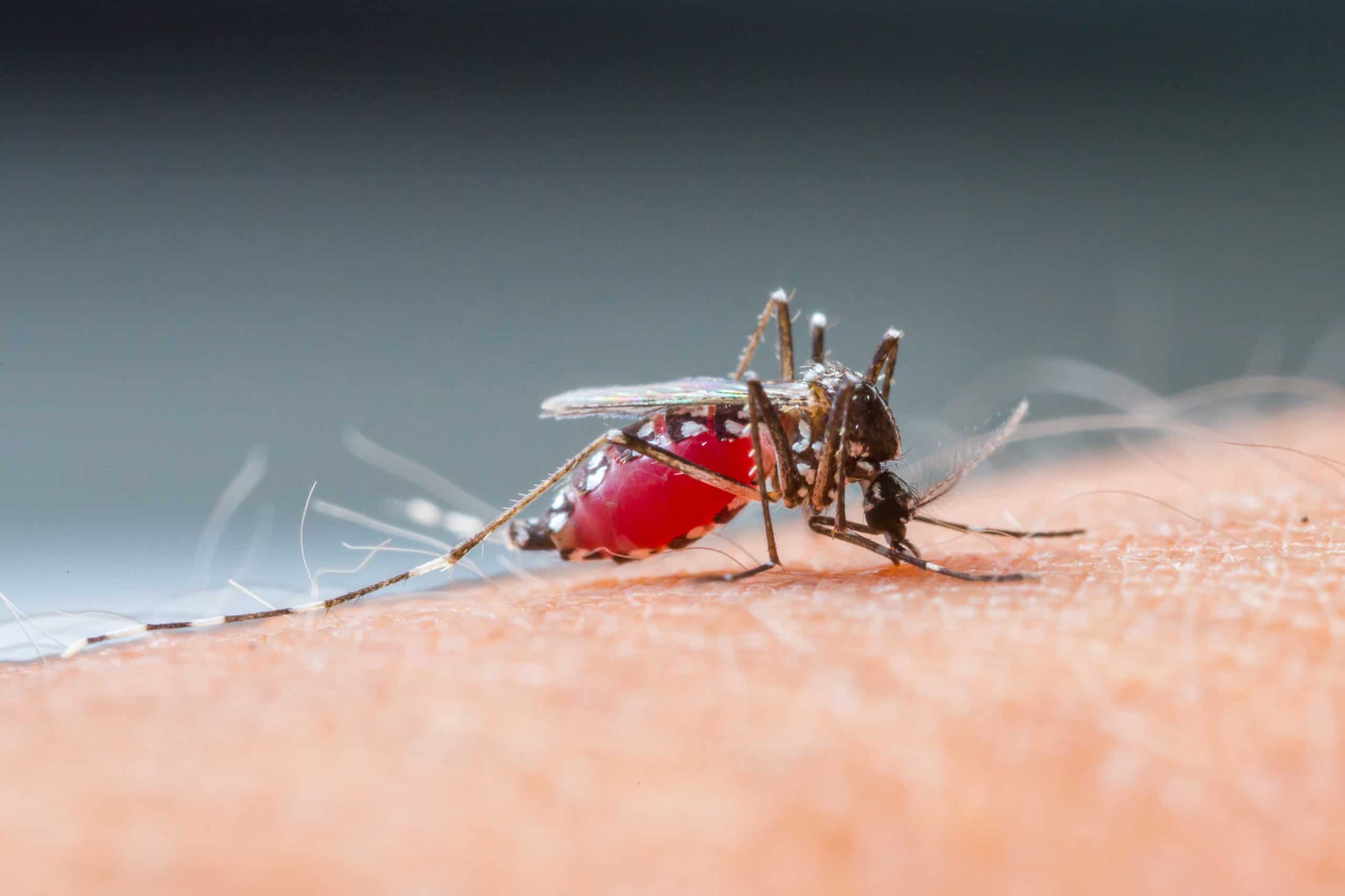Parasitic Pests
Parasitic Pests
Ectoparasites
Parasites are organisms that live off of another, known as the host, and often harm the host as they use them for their own survival. Unfortunately, there’s a fair share of pests that are also ectoparasites (ie. external parasites that both live and feed outside of their hosts). In this blog, we go over the four most common parasitic pests.

Bed Bugs
Bed bugs are tiny, creepy crawly members of the Cimicidae family that feast on the blood of mammals. These sneaky, bloodsucking insects are masters of concealment and operate by hitchhiking from location to location in order to find other hosts. They remain hidden in small, dark places within your home, often infesting beds, couches, and other areas where people rest. In the dark of the night, they slink out of their hiding spots and begin sinking their mouths into the skin of their unsuspecting hosts as they sleep, dining on as much blood as they can consume.
While most ectoparasites carry and transmit dangerous diseases from person to person, bed bugs actually have highly unique digestive systems that are capable of consuming and destroying most human bloodborne diseases within roughly an hour of ingestion. However, while they may not be able to pass diseases, they can still pose a significant threat to some people’s health. Most people respond to bed bug bites simply by having small itchy red bumps, but in rare cases, people may experience severe adverse reactions due to allergies or systemic reactions from repeated exposure both of which, if untreated, can potentially be fatal.

Ticks
As members of the arachnid family, ticks are expert climbers however and will use this skill to their advantage to find hosts. Climbing to the top branch of a bush, the end of a blade of grass, or the side of trees, the ticks will sit in rest, raising their front two limbs into the sky. These creepy, spindly arms have pads at the ends of them that are sticky and are meant for grabbing onto unsuspecting passersby.
Once a tick has found a host, they are immediately on the prowl for the best place to hide and feast. After finding a spot, they then split open the skin of their victim and insert their heads with a barbed, straw-like appendage sinking into the flesh. This makes them difficult to remove and, while it sounds painful, the saliva of ticks contains a local anesthetic that numbs the area, making the host unaware of the attacking parasite. This saliva also contains an anticoagulant so that the blood does not clot and continues to flow, along with suppressants for the immune system so that the body cannot respond by creating a large itchy bump or any other sort of reaction that would clue a host into their presence.
Unfortunately, no matter what stage of life they are in ticks can transmit diseases to their hosts. Most infamously, they are vessels for both Lyme disease and Rocky Mountain Spotted Fever. Symptoms of tickborne diseases range from mild such as fever/chills, aches/pains, and rash, to severe medical emergencies that can require hospitalization. In some cases, when tickborne diseases are not attended to in a timely manner it can even cause lasting complications including, but not limited to, neurological damage and hearing loss.

Fleas
There are more than 2,500 different species of fleas in existence, roughly 300 of which are found in the US. Fleas are external parasites which means they travel on the backs, legs, etc. of their hosts from place to place and being to being. Unfortunately, fleas are a very common pest for people with pets as they love to feast on the blood of our beloved furry friends.
When fleas bite, their saliva is injected into the dermis of their victims which can cause several problems for dogs, cats, and even humans. The most common reaction for pets is an immune response called flea allergy dermatitis (FAD), which results in intense itchiness and skin irritation. In other severe cases, when various fleas are attacking one host, your dog or cat could be at risk of developing a very serious medical condition: anemia. If left untreated, this flea-induced condition can unfortunately even lead to death.
Historically fleas were also spread by another pest: rats. When traveling on these rats, they were also spreading horrible diseases – most notably the bacterium Yersinia pestis… the “Black Plague.” While the plague is mainly perceived as an illness caused by rats, this is not completely true. More recent research into the historical epidemic has revealed that the disease was actually spread by the fleas on the rats. Other diseases that fleas can transmit to humans include tularemia and typhus.

Mosquitos
Mosquitos have been plaguing this planet all the way back to prehistoric times and, as such, they are possibly the most infamous parasitic pests on this list. These resilient bloodsuckers have become infamous murderers due to their ability to pass fatal diseases on a massive scale, and the CDC has even called them the “World’s Deadliest Animal.”
While they are infamous parasites, contrary to popular belief, not all mosquitos suck blood. There are approximately 3,500 different species of mosquitoes in the world, of which only about 200 species actually target us for our blood. Furthermore, out of the species that do target humans, it’s actually only the females that seek out sanguine meals, while the males tend to dine exclusively on nectar from flowers. But, for those that do suck blood, their effects can truly be devastating.
Many of the diseases that mosquitos carry are some of which are extremely detrimental, and even potentially deadly to humans. Most infamously, mosquitos spread Malaria, West Nile Virus, Zika Virus, Chikungunya Virus, Dengue, and Yellow Fever. In fact, each year, mosquito-transmitted diseases account for several million deaths worldwide, making it one of the deadliest creatures on Earth.

Citations
Anderson, D. and Tufts, D. (2019) Why Ticks are So Hard to Kill, YouTube. Science Insider. Available at: https://www.youtube.com/watch?v=5bEimiIZ9dA (Accessed: June 2020).
Brouhard, R. (2020) Systemic Reaction Through the Body, Verywell Health. Edited by M. Menna. Available at: https://www.verywellhealth.com/systemic-reaction-1298693 (Accessed: November 2020).
Burgess, L. and Seladi-Schulman, J. Ph.D. (2018) Why do mosquito bites itch? Causes and treatment, Medical News Today. MediLexicon International. Available at: https://www.medicalnewstoday.com/articles/320979#overview (Accessed: January 19, 2021).
Chapter 4: Disease Vectors and Pests (2009) Centers for Disease Control and Prevention. The National Center for Environmental Health. Available at: https://www.cdc.gov/nceh/publications/books/housing/cha04.htm (Accessed: January 20, 2021).
Cranshaw, W., Camper, M. and Peairs, F. (2013) Bat Bugs, Bed Bugs and Relatives, Colorado State University Extension. Available at: https://extension.colostate.edu/topic-areas/insects/bat-bugs-bed-bugs-and-relatives-5-574/ (Accessed: October 2020).
The Hidden Dangers of Flea Bites: What to Look For (no date) The Associated Press. Seresto. Available at: https://apnews.com/sponsored/?prx_t=z40EAq48yAniAPA&prx_ro=s&ntv_fpc=671dc30c-79c6-4e77-b41f-040c722e9642&ntv_fr (Accessed: September 2020).
Hill, C. and MacDonald, J. (2008) Purdue University. The College of Agriculture: Entomology. Available at: https://extension.entm.purdue.edu/publichealth/insects/mosquito.html#top (Accessed: April 2020).
Holland, K. (2019) Everything You Need to Know About Bed Bug Bites, Healthline. Medically reviewed and edited by C. Cobb, DNP, APRN, WHNP-BC. Available at: https://www.healthline.com/health/bed-bug-bites#pets (Accessed: September 2020).
How Mosquitos Got Their Taste for Human Blood – What it Means for the Future (2020) SciTech Daily. Cell Press. Available at: https://scitechdaily.com/how-mosquitoes-got-their-taste-for-human-blood-what-it-means-for-the-future/ (Accessed: September 2020).
Huizen, J. (2020) Bed Bug Bites: What You Need to Know, Medical News Today. Medically reviewed and edited by D. Sullivan, Ph. D., MSN, R.N., CNE, COI. Healthline Media. Available at: https://www.medicalnewstoday.com/articles/318083#control (Accessed: September 2020).
Mayo Clinic Staff (2019) Bedbugs, Mayo Clinic. The Mayo Foundation for Medical Education and Research. Available at: https://www.mayoclinic.org/diseases-conditions/bedbugs/symptoms-causes/syc-20370001 (Accessed: September 2020).
Mosquitos (2019) National Geographic. National Geographic Partners. Available at:
https://www.nationalgeographic.com/animals/invertebrates/group/mosquitos/ (Accessed: April 2020).
Mosquito Bites (2020) Mayo Clinic. Mayo Foundation for Medical Education and Research. Available at: https://www.mayoclinic.org/diseases-conditions/mosquito-bites/symptoms-causes/syc-20375310 (Accessed: January 19, 2021).
Mosquito-Borne Diseases (2016) Centers for Disease Control and Prevention. National Institute for Occupational Safety and Health. Available at: https://www.cdc.gov/niosh/topics/outdoor/mosquito-borne/default.html (Accessed: April 2020).
Potter, M. (2020) Bed Bugs, The University of Kentucky College of Agriculture, Food, and Environment. Entomology at the University of Kentucky. Available at: https://entomology.ca.uky.edu/ef636 (Accessed: October 2020).
Prevention and Control: Fleas (N/A) Illinois Department of Public Health. The Division of Environmental Health. Available at: https://www.idph.state.il.us/envhealth/pcfleas.htm (Accessed: May 2020).
Study: Bites Can Induce Potentially Deadly Systemic Reactions (2017) Pest Control Technology. Available at: https://www.pctonline.com/article/study-bites-can-induce-potentially-deadly-systemic-reactions/ (Accessed: November 2020).
University of Cincinnati (2017) Ticks are Even Tougher and Nastier Than You Thought, ScienceDaily. U of C. Available at: https://www.sciencedaily.com/realeases/2017/09/170925133016.htm (Accessed: June 2020).
Termites Are Awful Winter Pests – Here’s Why
Termites Are Awful Winter Pests – Here’s Why Termites Are Awful Winter Pests – Here’s Why Summary: Termites can remain active through winter [...]
How to Maintain a Pest-Free Kitchen for the Holidays
How to Maintain a Pest-Free Kitchen for the Holidays How to Maintain a Pest-Free Kitchen for the Holidays Summary: This blog educates homeowners [...]
Pests That Invade Packages & Boxes: How to Prevent Hidden Infestations
Pests That Invade Packages & Boxes: How to Prevent Hidden Infestations Pests That Invade Packages & Boxes: How to Prevent Hidden Infestations Summary: [...]
Keep Pests Out of Your Holiday Gatherings
Keep Pests Out of Your Holiday Gatherings Keep Pests Out of Your Holiday Gatherings Summary: The holiday season is all about good food [...]
Cold Weather vs. Warm Weather Infestations: How Temperature Shapes Pest Activity
Cold Weather vs. Warm Weather Infestations: How Temperature Shapes Pest Activity Cold Weather vs. Warm Weather Infestations: How Temperature Shapes Pest Activity Summary: [...]
Garden Pests Do Not Hibernate Indoors – How They Attack Houseplants And What To Do
Garden Pests Do Not Hibernate Indoors – How They Attack Houseplants And What To Do Garden Pests Do Not Hibernate Indoors – How They Attack [...]

